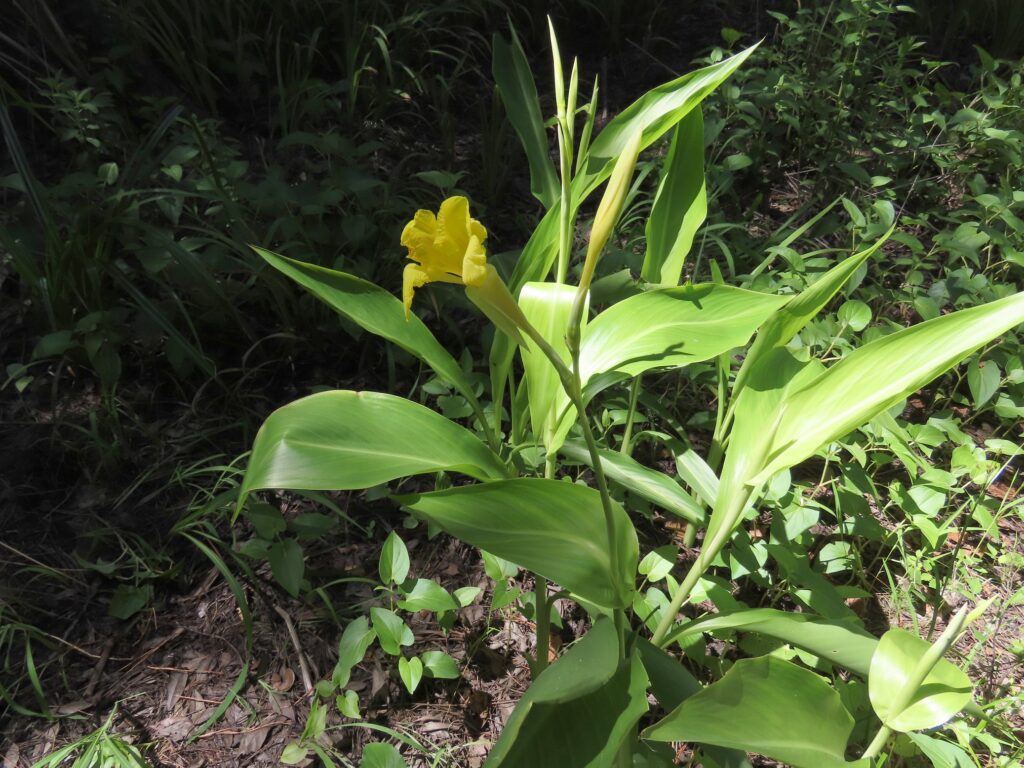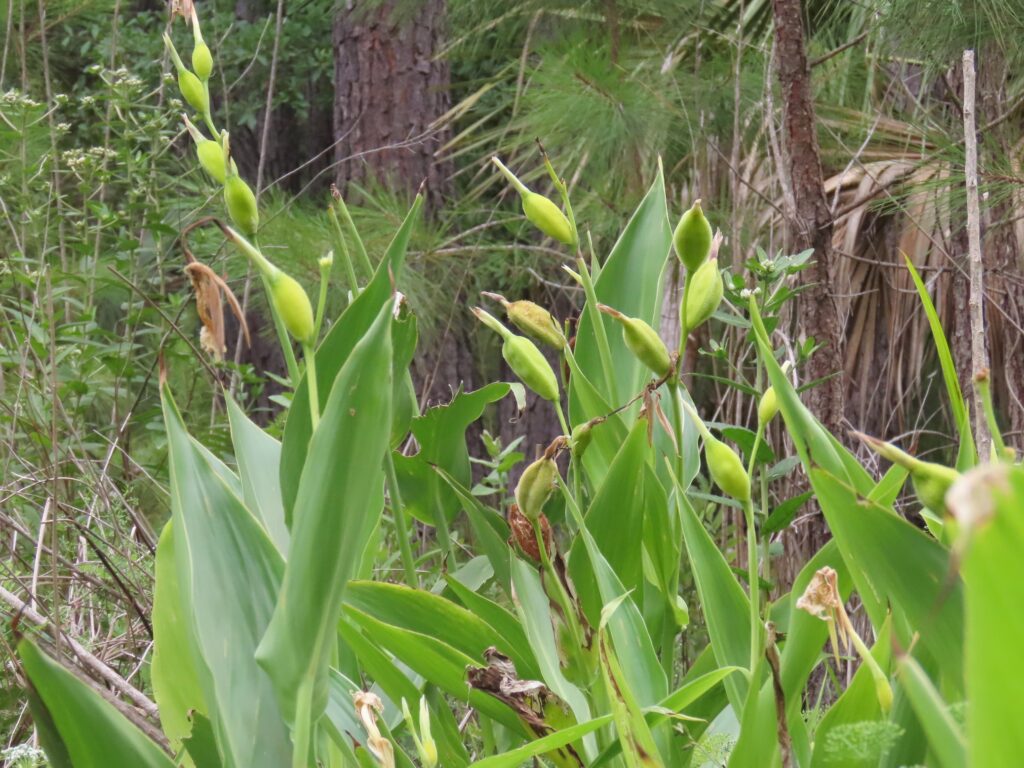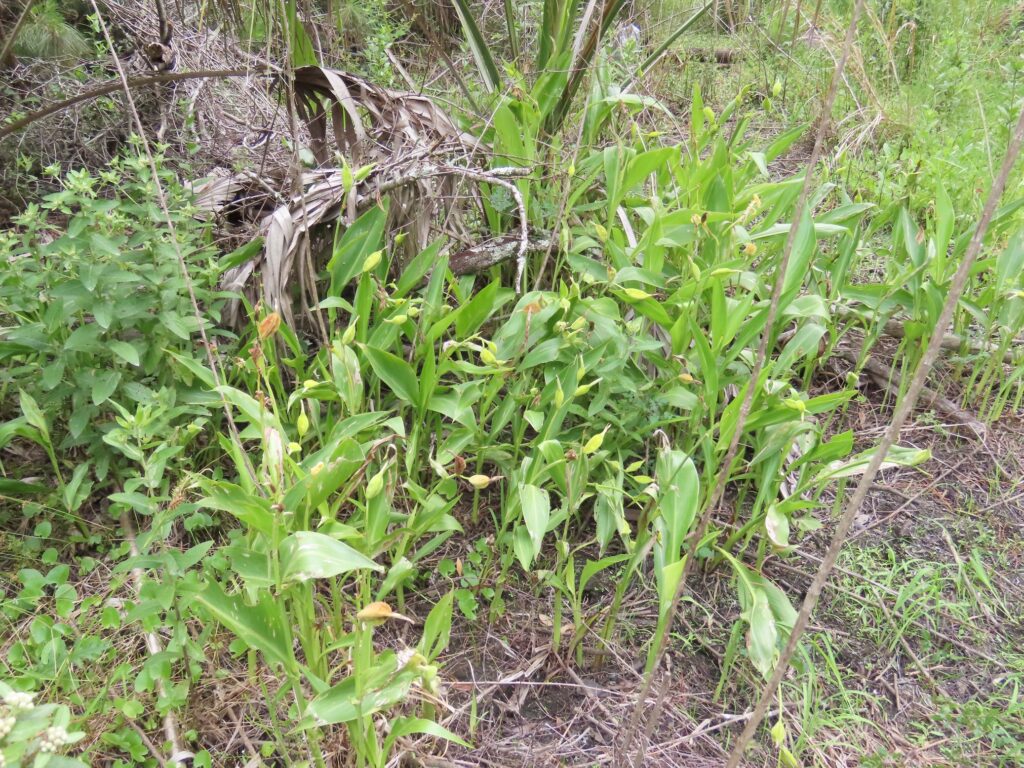





This week for Flora and Fauna Friday it’s the saffron signal of the summer solstice, Golden Canna (Canna flaccida).
Golden Canna is a common plant down in Florida but scarcely scattered on the landscape here in the Lowcountry. It’s a rare sight most anywhere in South Carolina but we’re blessed with a wild patch or two on Edisto Island. It grows in saturated mucky soils in freshwater marshes and is tolerant of submersion during the growing season. Golden Canna is a large perennial wildflower that spreads below the soil through rhizomes. Its leaves are large at over a foot long, tongue-shaped with a pointed tip, yellow green in color, and held upright around its fleshy stem. The foliage grows to just above waist high.
Golden Canna begins to bloom in mid-May and continues through mid-June. Its flowers are hung above the foliage, a frilly folded funnel of pastel-yellow unmistakable as anything else. These flowers attract bees and large butterflies, particularly Swallowtails, to pollinate them. Pollinated flowers mature into seedpods about the size and shape of a starfruit but fuzzy and pale-green. These seedpods dry over time and their skin disintegrates, revealing magazines of hard, round, and black seeds the size and shape of 00 buckshot.
Golden Canna makes for a good wildflower addition to most pond banks and rain gardens. They do best on rich, saturated soils and with plenty of sun. However, they’re frost intolerant. So the subtropical Sea Islands are where they’ll thrive most reliably. They attract pollinators when in bloom, have handsome foliage when not, and that foliage is the larval food for the Brazilian Skipper butterfly (Calpodes ethlius).
We have two non-native Cannas floating around Edisto Island as well, Indian Shot (Canna indica) and Garden Canna (Canna X generalis). Indian Shot has red flowers with narrow petals and broader leaves held more perpendicular to the stem. Garden Canna is a catchall taxa of hybrid plants and thus comes in a hundred different forms. However, it most often has darker, larger foliage. Both can readily be separated from Golden Canna by their seedpods, which are half the size, roughly spherical, and held upright.